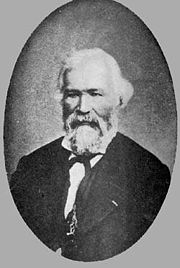
Louis René Tulasne
Encyclopedia

Azay-le-Rideau
Azay-le-Rideau is a commune of the Indre-et-Loire department in central France.-Château:The château of Azay-le-Rideau was built from 1515 to 1527, one of the earliest French Renaissance châteaux...
. He originally studied law at Poitiers
Poitiers
Poitiers is a city on the Clain river in west central France. It is a commune and the capital of the Vienne department and of the Poitou-Charentes region. The centre is picturesque and its streets are interesting for predominant remains of historical architecture, especially from the Romanesque...
, but his interest later turned to botany. As a young man he accompanied botanist Auguste de Saint-Hilaire (1779–1853) to South America to study the flora of Brazil. From 1842 until 1872 he worked as a naturalist
Natural history
Natural history is the scientific research of plants or animals, leaning more towards observational rather than experimental methods of study, and encompasses more research published in magazines than in academic journals. Grouped among the natural sciences, natural history is the systematic study...
at the Museum of Natural History
Muséum national d'histoire naturelle
The Muséum national d'Histoire naturelle is the National Museum of Natural History in Paris, France.- History :The museum was formally founded on 10 June 1793, during the French Revolution...
in Paris
Paris
Paris is the capital and largest city in France, situated on the river Seine, in northern France, at the heart of the Île-de-France region...
.
Tulasne's specialized study was the science of mycology
Mycology
Mycology is the branch of biology concerned with the study of fungi, including their genetic and biochemical properties, their taxonomy and their use to humans as a source for tinder, medicinals , food and entheogens, as well as their dangers, such as poisoning or...
. His microscopic investigation of fungi, particularly parasitic species, contributed much to the understanding of the complexities of its nature and development. He is credited with introducing the concept of "pleomorphy" concerning fungi. Pleomorphy states that an individual fungus, growing in different substrates can have dramatically different forms. Several mycological species, as well as the genera Tulasneinia and Tulasnella are named after him.He was also the first who found the reproduction cycle of Claviceps Purpurea (Ergot) in 1853.
Tulasne published over 50 scientific articles during his career. Some of his best work was done in collaboration with his brother, Charles Tulasne
Charles Tulasne
Charles Tulasne was a French physician and mycologist who was born in Langeais in the département of Indre-et-Loire. He received his medical doctorate in 1840 and practiced medicine in Paris until 1854. Afterwards he worked with his older brother Louis René Tulasne in the field of mycology...
(1816–1884), such as Fungi hypogaei (1851)
and the three-volume Selecta fungorum carpologia (1861–65). The latter work is known for its superb detailed illustrations, which were created by Charles Tulasne. This botanist is denoted by the author abbreviation Tul. when citing
Author citation (botany)
In botanical nomenclature, author citation refers to citing the person who validly published a botanical name, i.e. who first published the name while fulfilling the formal requirements as specified by the International Code of Botanical Nomenclature...
a botanical name
Botanical name
A botanical name is a formal scientific name conforming to the International Code of Botanical Nomenclature and, if it concerns a plant cultigen, the additional cultivar and/or Group epithets must conform to the International Code of Nomenclature for Cultivated Plants...
.

